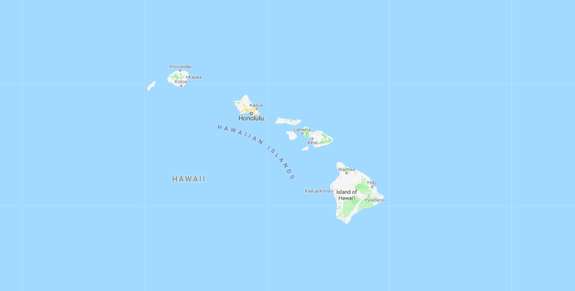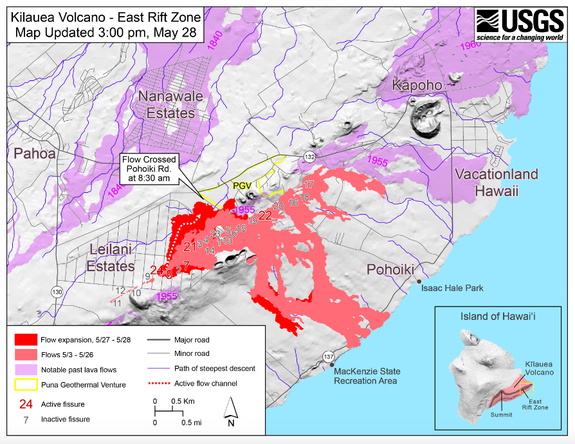Don't let lava stop you from visiting Hawaii

The images are downright apocalyptic. With plumes of ash and glowing lava, the area around Mount Kilauea looks more like Mordor than a tropical paradise.
That hasn't been great for tourism. National Park System economist Lynne Koontz told the New York Times the local economy is losing $455,000 per day.
SEE ALSO: Can I roast a marshmallow over lava?
Still, if you've got a plane ticket to Hawaii, there's no need to cancel your trip — you'll probably be fine.
First of all, the Big Island of Hawaii is, well, big. The volcano is erupting on a tiny corner of an island that measures more than 4,000 square miles, which is more than double the area of the entire state of Delaware. Most of the big resorts are in Kona, on the island's west side. That's about 100 miles from the volcano.
Concord University volcanologist Janine Krippner put the danger in perspective in this tweet:
The #Kilauea eruption is affecting people. People are losing their homes. This is serious.
But this is a big island and this eruption is being exaggerated just a little, don't ya think?
Thank you, who ever made this image: pic.twitter.com/O6MJxY4N5q— Dr Janine Krippner (@janinekrippner) May 23, 2018
As a tourist, you'd have to go out of your way to be affected by the lava. Also, the state of Hawaii is made up of eight main islands, which are separated by large swaths of the Pacific Ocean.

Image: Google
Honolulu, on Oahu, is located more than 200 miles from the volcano. That's farther than New York City is from Boston.
Kauai — the lush Garden Isle of Hawaii — is even farther. (Most of the island was unscathed by the floods that hit in April, although some communities are still in need of aid.)
Now, if you are going to the Big Island, you'll have to cancel your trip to the closed Hawaii Volcanoes National Park. The eastern part of the island around Mount Kilauea is indeed dangerous. In Pahoa, a man trying to save his friend's house from fire was hit by a red-hot "lava bomb" that snapped the bones in his leg. The Leilani Estates community has been hit especially hard.

Image: USGS
Another problem: Kilauea is releasing vapor, carbon dioxide, and sulfur dioxide into the air, which can lead to volcanic smog, aka "vog."
Vog can irritate eyes and cause respiratory problems, especially in people with pre-existing respiratory conditions and chronic obstructive pulmonary disease (COPD), Krippner said in an email.
So far, most of the vog has blown offshore, although it can travel to the western side of the Big Island and even other islands if the conditions are right. The University of Hawaii's Vog Measurement and Prediction Project (VMAP) is a useful tool for monitoring the spread of vog.
The threat of vog — and "laze," a toxic haze created when lava hits seawater — is higher the closer you are to active fissures. Obviously, if there's lava flowing nearby, you're going to want to stay away.
None of this is to diminish the need for humanitarian and government aid in Hawaii. More than 70 houses and other buildings have been destroyed and more than 2,000 people have been forced to evacuate their homes.
But overblown fears could damage Hawaii's already hurting tourism industry.
"I don’t think people should be largely concerned if they are healthy, listening to the authorities ... and if they are prepared ahead of time," said Krippner.
(Tourists would be wise to bookmark the sites for the USGS and Hawaii County Civil Defense Agency.)
"If I had travel plans to Hawai’i," she said, "I would still be going."
WATCH: Exploring volcanoes with robots: a day in the life of Carolyn Parcheta

